#alexisnikole
Explore tagged Tumblr posts
Text
382 notes
·
View notes
Text
Alexis' tiktok about the cicely mary barker fairies is me with brambly hedge and the poortvliet gnomes, but like i always kinda wanted to get into those fairies
2 notes
·
View notes
Text
I know I've never posted reblogs here but this is important.
Always, ALWAYS, verify the validity of any field guides you purchase and the credentials of the authors. More and more, AI generated field guides are being sold under fake authors names with gods know what kind of false information inside. This is stupid and dangerous and fucked up and could easily lead to deaths due to the consumption of falsely IDed mushrooms/plants.
When buying field guides, especially if you plan to consume the species you identify, make sure the author is first of all A REAL PERSON and one who is credible in whatever field the guide is for and has the trust and backing of the community. Its also a good idea to purchase from well established environmental organizations such as the National Audubon Society.
Make sure you are using guides specific to the area in which you will be foraging, in the U.S. you can often find them by state. It is also important to cross-reference from more than one guide/source. If you have any local foraging groups, they are likely to be your best resource. Consider joining them on a foray or even just speaking to members, they should be more than happy to share info and resources.
Field guides do tend to be somewhat expensive, so I'd recommend checking your local library or buying second hand from thrift/antique shops, local bookshops, thriftbooks.com, or even ebay.
And when you choose to eat something you have foraged (plant or fungus), always try a small amount - very small! some of the deadliest amanitas can kill an adult from a piece as small as a thumbnail - first and wait a day or at least several hours before consuming larger quantities to make sure there are no ill effects. Some species are considered edible in some places and toxic in others and some well known edibles can still cause upset in certain individuals.
I have been actively foraging and IDing fungi for at least 2-3 years now and I have never eaten a mushroom I've found in the wild, even if I was dead certain of its species and edibility, because I know that I still do not have the necessary expertise to feel fully confident in doing so.
This is a very long post but the information is important. Always err on the side of caution when foraging and take the time to check up on your sources.
from Alexis Nikole’s instagram
#anti-AI#blackforager#alexisnikole#foraging#mycology#mushroom#mushroom hunting#wild mushrooms#mushrooms#important#AI#fuck AI#field guide#field guides#forager#edible mushrooms#amatuer mycology#fungi#fungi of texas#mushrooms of texas#texas mushrooms
17K notes
·
View notes
Video
@alexisnikole If you need me i’ll be in this dress until fall okay byeeeeeee #aphroditecore
♬ original sound - Alexis Nikole
tiktok
ok but This Dress
0 notes
Text
Has anyone tried the sauteed yucca flowers and found them a little bitter? I used too much olive oil and not enough garlic but still...
3 notes
·
View notes
Text
♡ | by alexisnikole on Tiktok
#mine#stim#visual stim#stim video#yummy queue#food stim#irl food#nature stim#violets#flowers#dessert#jelly#candy#gummies#cooking#purple#dark purple#people#brown#orange#white#boiling#pouring#spices#mixing#hands tw#trypophobia tw#bubbles tw#scopophobia tw#flashing tw
22 notes
·
View notes
Text
An American Witch’s Herbal: Hosta

Hosta spp.
Common Names: Hosta, Plantain Lilly, Giboshi, Funkia
Type: Herbaceous Perennial
Element
Astrological
Magical Uses
Botanical Family: Asparagaceae
Region of Origin: China, Japan, Korea and Eastern Russia
Hosta, after Nicolaus Thomas Host, who was considered to be an expert on grasses. The genus went through many name changes to get where it is today, though.
Growth and Care
Is there any garden plant quite as ubiquitous as the hosta? It’s a popular pick because of its extreme hardiness--even the most beginner of a gardener would be hard pressed to kill these. Sometimes even when you think they’re gone for good, they have a tendency to rise from the dead and surprise you. While not at all particular, they do have a preference for at least some shade and may flounder if left in hot soil and all-day sun. Planting them underneath trees can be a good way to fill space, provide them protective shade and shelter from storms and hail, if those are issues in your area.
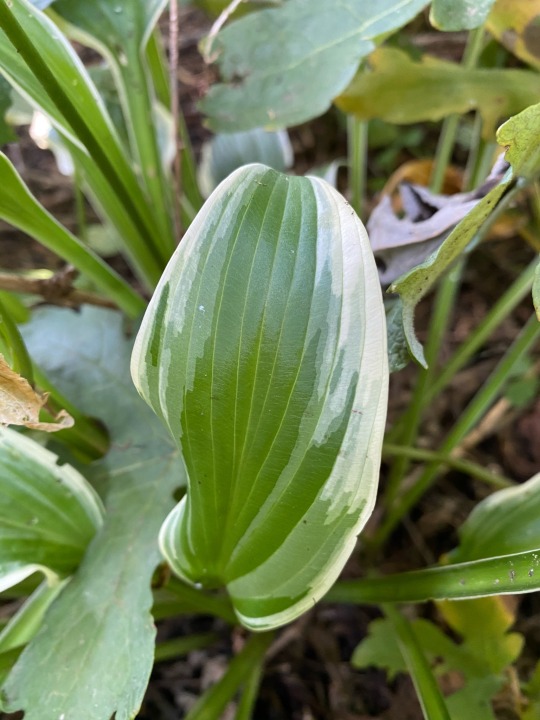
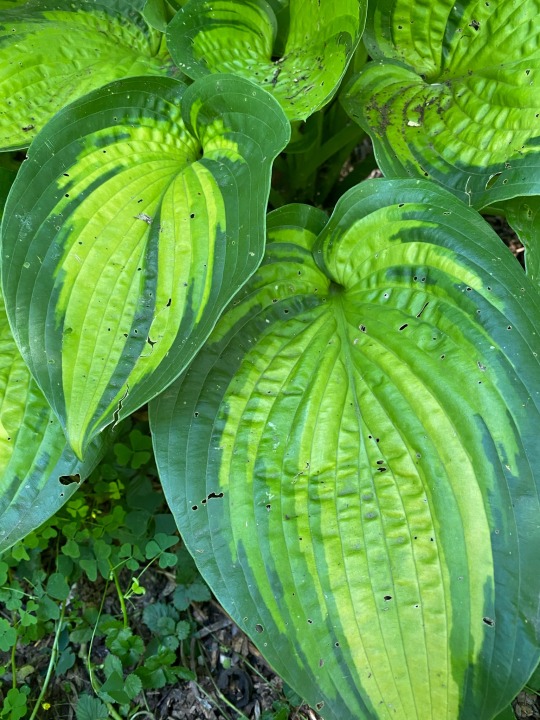
Mostly grown for attractive foliage that lasts from spring through summer, hostas come in a variety of colors and variations including white, yellow, all shades of green to almost blue, sometimes with stripes and splashes of multiple colors on the same plant. There are miniature varieties that comfortably live on office desks like the 4-5 inch ‘Mouse Ears,’ up to the massive ‘Empress Wu’ cultivar, which grows to a mature height of 4 feet tall and 6 feet wide. They put up a flower in summer, usually white or light purple in color, which rarely has much of a fragrance. The exception to this is H. plantaginea and its cultivars, sometimes called ‘August Lily.’
They will spread over time, and you may find yourself having to divide them every three years or so if you want to maintain your planting to roughly its original size.
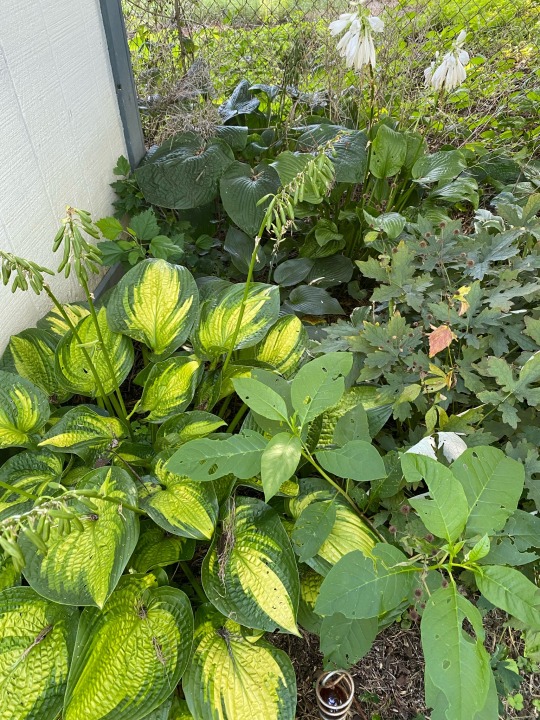
General Use
Though here in the west we tend to think of hostas as simply ornamental, in some parts of Asia it is grown as a vegetable. Deer, rabbits, slugs and snails will all happily munch on it, but it is toxic to dogs, cats and horses. Best way I’ve found to prepare them so far is to gather the young, still-furled shoots in spring and prepare them as you would asparagus, maybe by sautéing in a little butter or olive oil. The flavor is similar! (@alexisnikole TikTok/@blackforager on Insta has a great little video where she wraps them in [vegan] bacon!) Once the leaves have opened up, they do take a bitter turn.
Magical and Symbolic Use
In the language of flowers, the hosta has been used to symbolize devotion. This devotion doesn't really have a specifically romantic bent, as "friendship" is usually another meaning ascribed to these plants. Regardless of the specific connotation, the constancy and resilience of hostas make these an obvious choice for inclusion in rituals designed around growing and maintaining positive relationships.
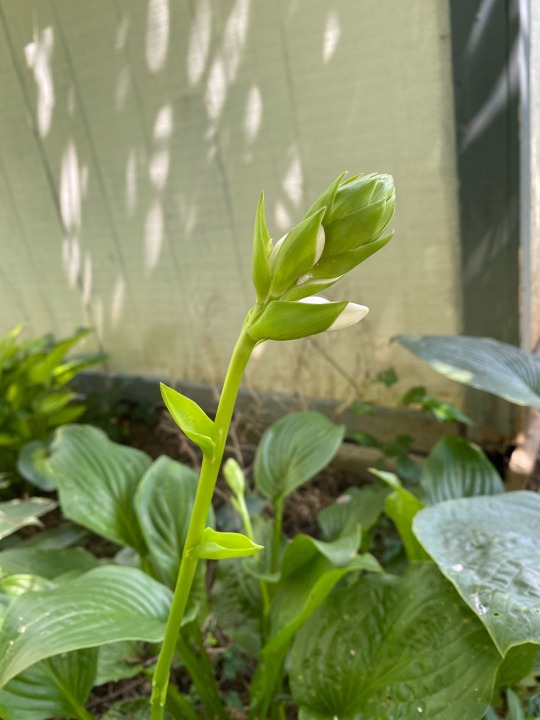
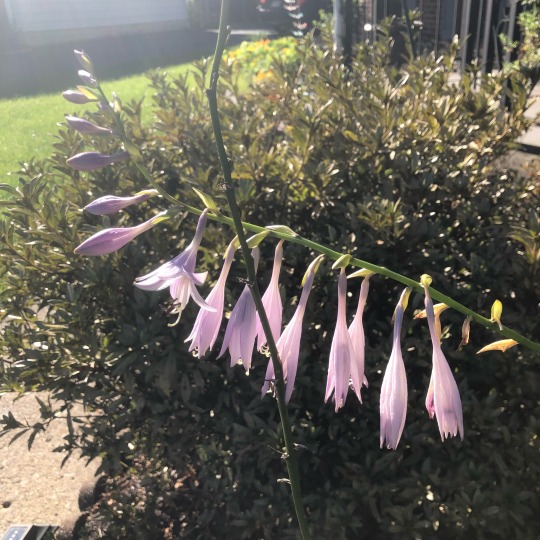
If you like this post and want to see more like it, check out the tag I use for this whole series throughout my blog: #american witch's herbal
#witch#witchcraft#green witch#green witchcraft#garden magic#grimoire#book of shadows#herbalism#american witch's herbal
7 notes
·
View notes
Text
Week 6- Climate Justice, Food Sustainability and Black Lives Matter
1. Who is Leah Thomas and what happened at COP26? (1 paragraph)
Leah Thomas (commonly known as Green Girl Leah) is an intersectional environmentalist activist that helped advocate for inclusivity in the environmentalist community; she is Black and represents Black young climate change progressives. At COP26 (an annual conference that was based in Glasgow for this specific year) she spoke in hopes of expanding the conversation on climate change with a new post 2020 BLM lens.

2. What is Intersectional Environmentalism and how does it relate to Black Lives Matter (2-3 paragraphs)?
Many of today's young environmental activists resonate with intersectional environmentalism. This new wave of environmentalism was founded following the death of George Floyd. Leah Thomas, an eco-influencer, made a post on Instagram urging environmentalists to take a stand and address the racial inequalities inside their own groups.
"Intersectional environmentalism is a movement, not a moment: “It brings injustices done to the most vulnerable communities, and the earth, to the forefront and does not minimize or silence social inequality. Intersectional environmentalism advocates for justice for people + the planet.” " -Leah Thomas
3. Who is Leah Penniman? What is Soul Fire Farm and why is it important to the climate movement (2-3 paragraphs)?
Leah Penniman is a Black Kreyol farmer, mother, author, soil geek, and food justice campaigner. In order to eradicate racism from the food system and restore our ancestors' relationship to the land, she co-founded Soul Fire Farm in 2010.
As Co-ED and Farm Director, Leah leads a group that supports effective food sovereignty initiatives such as farmer education for Black and Brown communities, subsidized farm food distribution for communities experiencing food apartheid, and national and international organizing for food system equity.
4. Explore "Black Forager" aka Alexis Nikole on TikTok: choose a favorite post and if possible, try the recipe! What is your experience of her content and what important issues does she raise? What is the key to her incredible following (4.4 million on TikTok, 1.7 million on Instagram and counting...)
https://www.tiktok.com/@alexisnikole?Links to an external site.
With an emphasis on vegan recipes, Nelson's postings cover a variety of subjects, including the history of American foraging legislation, the indigenous roots of foraging in America, and sustainable methods for her audience to eat more wild plants and mushrooms. I personally love her content and I find her videos to fall into a niche category that isn't necessarily so niche anymore! When I first discovered her page she had about 100k followers!
5. How do you define food sovereignty in your own life? Do you grow your own food? Do you forage? Compost? Did the pandemic change your food habits? How do you connect to the 'black gold' of soil? Have you ever volunteered at a community garden?
The term food sovereignty was a relatively new concept for me to put into words as I have no experience foraging, composting, or have any particular food habits that need special care. I would possibly like to volunteer sometime at a community garden as that has always appealed to me.
6. Choose one of the people mentioned in the article by Leah Thomas to profile with a one-paragraph bio.
Please include this bio in the thread below as well as on your blog.
Isaias Hernandez is a California-based educator and campaigner for environmental justice. His upbringing in a neighborhood that experienced environmental injustice affected the way he perceived the world. Because of his experiences, he founded the Queer Brown Vegan platform, an environmental educational page that addresses intersectional issues and social justice that aren't usually addressed in environmental contexts.

0 notes
Text
438 notes
·
View notes
Text
Besides my obvious concern about the lack of a jkr disclaimer in alexis' mention of quidditch, the idea that gen z is "aging" faster than millennials is like... what kind of aging are we talking about? I thought it was about socially acting older, alexis seems to think it's a cosmetic thing about wrinkles, but if it's physical I'm real skeptical because gen z is still too young to know when everyone's talking about their aches and pains
0 notes
Text
This is important.
How to harvest honorably for the future: A LOVING RANT
I love this woman. Go check out her videos.
120 notes
·
View notes
Text
I didn't read the trash anti-foraging article alexis is talking about but I really hope it at least specifies that people shouldn't plant invasives in their yards instead of foraging. I saw shiso seedlings on sale at H Mart and it makes me mad to think about too much
#i'm an alexisnikole fan blog now#eat your invasives#in the wild or when you fall victim but don't fucking plant them
2 notes
·
View notes
Text
Waaaaaaaaaaaaaaaaaah
77 notes
·
View notes